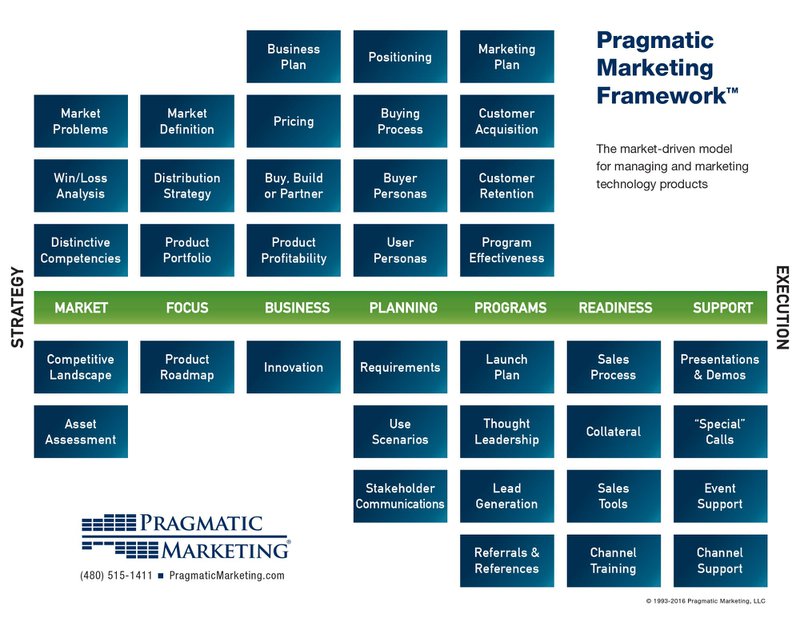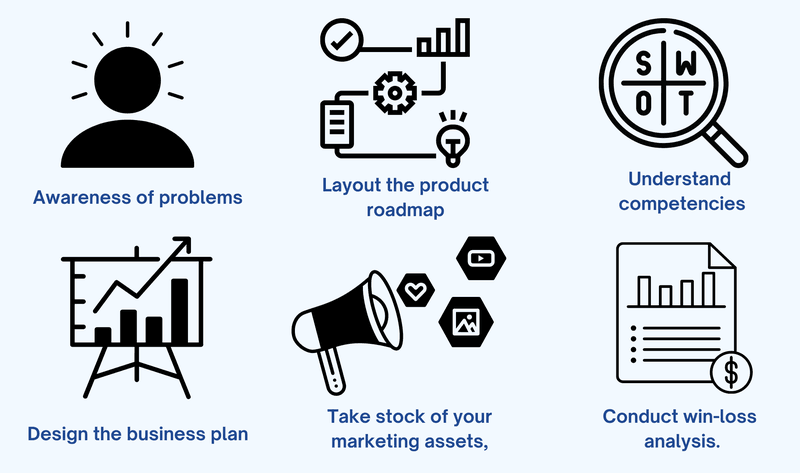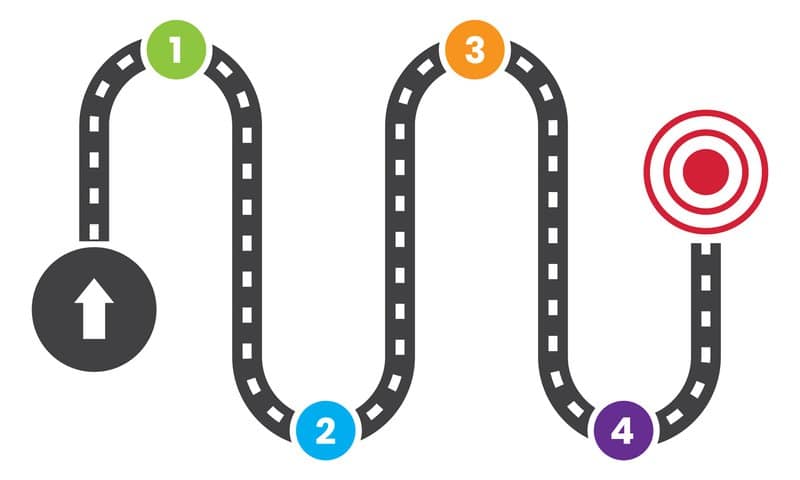Product – The core of any business. For a business to be successful, people must be aware of its product and the benefits it has in store for them. And for that to happen, the marketing of the product must be on the money! In this piece, we will look at product marketing through the lens of the pragmatic marketing framework.
What Is The Pragmatic Marketing Framework?
This approach helps break down the necessary steps involved in the building and marketing of products that cater to the needs of the people. Basically, the framework provides a common language for the whole product team.
Additionally, it also gives a plan of the critical steps needed to bring viable and profitable products to the market.

In this framework, the marketing plan is constantly assessed. This is done to ensure that the entire activity is relevant to the customers. Now, you must be asking yourself – “How is pragmatic marketing different from the conventional approach to product marketing?”
Well, in the usual approach – product teams create a product. Only after that do they focus on finding a need that it fulfills. However, in the pragmatic method, the teams let the market decide the products that need to be built. So pragmatic marketing is one of the most efficient ways to deliver the product to the end customer.
There is a range of compliance checks and tests that pragmatic marketing involves. As a result, the final product will be adapted to meet the customer’s needs.
For instance, a shoe might be designed to meet the needs of a very niche segment. The shoe is then released to a small sample population of that segment. And after that, it is redesigned based on the feedback received. Subsequently, the final product will be well-received when it is finally launched in the market.
How to Use the Framework?
Now that we understand the pragmatic marketing framework let us look at its implementation. Firstly, customer needs are studied in great detail. The next step is the creation of the prototype. This prototype typically includes many requirements of the customer.
Post the construction of the prototype is the beta testing stage. Here, a select group of customers gets early access to the product. After a few days of extensive use, the team includes the feedback of this group of users into the second prototype.
The prototype creation in this framework is an iterative process. This means that it continues till the product features satisfy all the users in the group.
The use of marketing channels.

Many companies tease about an imminent product release. Grand launch events are also an integral part of their product marketing plans.
An apt example of this is Apple. The company creates hype around its new products through several rumors and leaks. So the fans and potential customers know what to expect from its flagship keynote event.
Now, other mobile companies have started following this trend as well.
Timing the product launch.
Choosing the right time to launch your product is extremely important. This enhances the chances of the customer noticing it amidst all the noise. It also helps if a brand schedules its launches around the same time every year. Firms tend to do this around highly anticipated events such as the Superbowl.
Furthermore, it is even better if the brand manages to make its own marketing event.

Continuing with the example of Apple, it is remarkable how the company has managed to create a buzz around its keynote with many fans and industry fans constantly on the lookout for exciting new features.
Positioning and Messaging.
A vital part of the pragmatic marketing framework is the brand’s positioning. Let us look at the example of Nike to understand this further.

Nike’s ads focus on the best sportspersons pushing themselves to the limit. Thus, they always connect their brand to excellence and achieving greatness. As we can see, the limelight is not on the product but on emotional attributes that they would like their customer to recall.
Steps and Considerations in the Pragmatic Marketing Framework

In this section, we take a deeper look at the steps that pragmatic marketing involves:
Awareness of the market problems.
Before working on the product’s design, it is essential to identify the target markets and the gaps in them. Then, one must work on interviewing potential customers to obtain additional information.
Layout the Product Roadmap.
After you have understood your customer’s problems, it is time to work on the product roadmap. The product roadmap will contain use cases based on the customer. Also, one must keep in mind specific questions while working on the product roadmap. Some of these are:-
- The buying preferences of your customers
- Latent need or untapped customer potential
- Customer perception of your brand
Analyzing distinctive competencies.
One must take a step back and assess if their firm can provide value to the market. The way to do this is outlined below:
- Conduct 20-30 interviews. This will help in evaluating strengths, weaknesses, and areas of improvement.
- Utilize use cases that assist you in narrowing down on market segmentation and targeting.
- Conduct a SWOT (Strengths, Weaknesses, Opportunities, Threats) analysis to understand the project plan better.
Design the business plan and the product.
Now, it is time to prepare a business blueprint that will help you capture the previously identified market segment. Also, this will ensure alignment in the team and coordinate all efforts in the same direction.
Now comes the most crucial part – designing the product. The business blueprint should always act as an overarching guide for the product design.
Take stock of your marketing assets.
One should take the time and review all marketing assets while working on a pragmatic marketing plan. These could include:-
- Website content
- Brochures
- Flyers
- Case studies
- White Papers
- Social media posts
- Emails
- Offering pitch decks
Updated marketing assets are a fantastic way to show the customer that you have a firm grip on the current trends in the market and industry. It also helps you keep them engaged and updated with what’s happening.
Conduct win-loss analysis.
The next logical step is to understand the present brands in their consideration. Try to understand why a customer chose or did not choose your product.
Now, apply the findings and get back to the drawing board to make the necessary modifications for the next product version.
Key Considerations and Focus Areas in Pragmatic Marketing
It is essential to take note of the following points when utilizing the pragmatic marketing framework:
- Pragmatic marketing helps you decide the most crucial components to focus on rather than the finer details.
- The various individual factors tend to multiply rather than add up.
Focus Areas in Pragmatic Marketing
The work put into pragmatic marketing should bear fruit for the entire organization. So we have outlined the essential focus areas below:
- Decide industry and market: Pin down on target markets to determine market segments that need exploration. The targeted market segments must be capable of supporting your business now and in the future.
- Work on a distribution strategy: One must lay the groundwork to identify the channels that align with the target market’s buying preferences.
- Compile a product portfolio: There could be multiple target markets and segments that one might have in mind. Therefore, to avoid confusion, one must categorize their business plans, marketing strategies, buying processes in separate portfolios.
Similarities and Differences Between Agile Software Development and Pragmatic Marketing

People who have tried multiple approaches to product development will notice similarities between the agile software development approach and pragmatic marketing. Some of these similarities are:
- One has to tweak the product according to customer requirements in both methods. Thus the product remains in a constant stage of evolution till the final version.
- Both the approaches are based on the belief that creating a balanced product with features to appeal to most of the customer base will drive sales.
However, there exist some differences in these approaches as well. And we shall look at them below:
- The agile software development life cycle prioritizes rapid incremental changes. This is ideal when the project requirements are inconsistent. But agile development techniques will not necessarily result in better sales. This is because the agile method delivers the product sooner. However, it may not be a product that people want to buy.
- Agile development depends on incremental feedback that is often ad-hoc. But in the case of pragmatic marketing, feedback is obtained from the whole team, and then the product is launched in the target market. This results in holistic feedback that leads to an overall improvement in the product.
Disadvantages Of Pragmatic Marketing
The problem with the pragmatic marketing approach is that building and launching successful products is not easy.
Moreover, developing and marketing a successful product requires long-term planning, which does not end well in most cases. The other reasons for the failure of pragmatic marketing can be distilled as follows:
- Identifying a problem that is worth solving can be time-consuming. Also, once a problem has been identified, the next step involves finding out whether the solution has a good customer base. Additionally, one needs to know if they have enough resources to tackle a problem.
- Apart from all this, the solution that your product provides must be a feasible one. It must also appeal to the customer. There is no point in developing a product that does not solve a problem as per the customer’s expectations.
Key Takeaways Of Pragmatic Marketing
All firms keep releasing new products regularly. This keeps them abreast of the trends in the market. Also, it helps them understand the evolving tastes and preferences of the consumer.
When you talk product, you have to talk product roadmaps. Every new product release and update is part of a product roadmap. However, traditional roadmaps are becoming obsolete.

This is because traditional roadmaps do not bring out the company’s vision. They do not tell why the problem that the company is trying to solve is essential for the customers and other stakeholders.
They focus on developing the product before unearthing a real market problem. On the other hand, the pragmatic marketing approach allows the market to decide what products the team must build.
Another issue with traditional product development is that they do not consider the readiness of other teams when it comes to the product launch. The end date depends on the preparedness of the entire launch plan and not just the product.
Since the product development in the pragmatic approach is closely tied to customer needs and feedback, urgent solutions are prioritized.
The continuous evaluation and testing and the feedback loop only augment the probability of a successful launch.
In Conclusion
The pragmatic marketing framework creates harmony between product development’s business and technology aspects. And when the various facets of product development come together, they result in empowered teams that ensure the creation of a product where the different parts of the product work in complete cohesion resulting in an unparalleled user experience.
One of the standout features of the pragmatic marketing framework is that all the information related to planning, marketing, sales, distribution, and technical features is in one place. This makes it easy to get a comprehensive view of the entire project at a single glance.
Here are some key points to remember:
- Let the market lead you to solve problems for them.
- Always take feedback. Be ready to repeatedly review, test, and adapt.
- Always be ready to change with time, and there will be a very high chance that you will have an ideal consumer-centric product.

Ranu Kumari is a Professional Writer and a Marketing enthusiast who currently runs her own Marketing Consultancy, LatitudeBOX. She has written promotional articles for multiple brands and has published her work in Scopus indexed journals. She is passionate about expressing her thoughts and ideas to connect with her readers in a voice that they understand.
